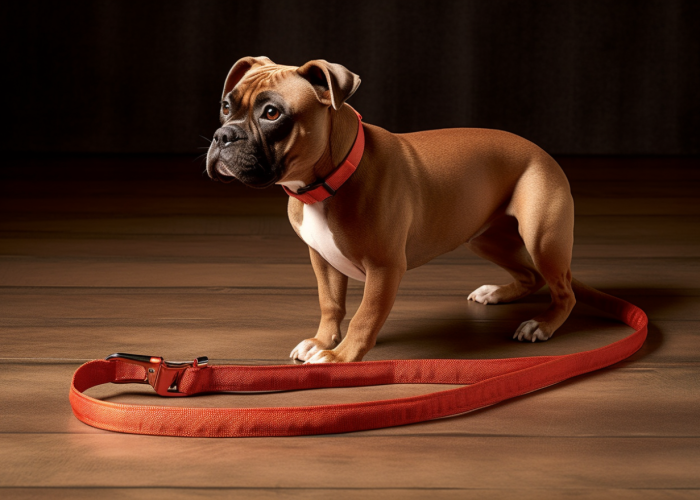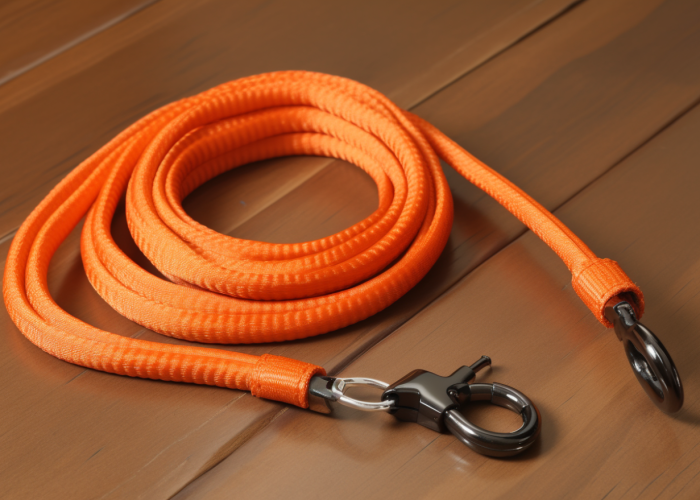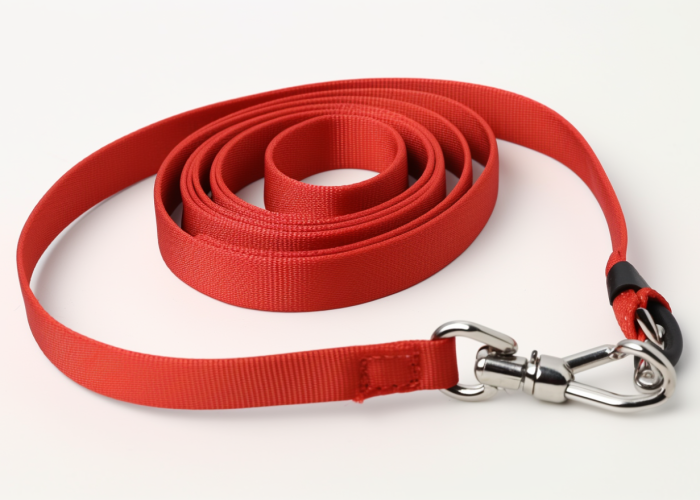Through decades of manufacturing webbing for pet product brands, we’ve consistently observed nylon’s superior performance in collar, leash, and harness applications. Our technical expertise in material science reveals why nylon consistently outperforms alternatives in the demanding pet product environment.
Nylon webbing dominates pet products due to its high tensile strength (4,000+ lbs), superior abrasion resistance, and durability under repeated stress. It lasts 3–5× longer than cotton and performs reliably from -40°F to 200°F, meeting demanding pet use conditions.
Explore nylon’s material benefits, manufacturing insights, and specs to ensure top performance for your custom pet products.


Webbing manufacturing expert with 15+ years of experience helping product developers build high-performance straps for industrial, medical, and outdoor use.
Nylon webbing outperforms alternatives in pet collar applications thanks to its high tensile strength, abrasion resistance, and dimensional stability. It resists stretching under sudden loads and maintains integrity during daily wear, making it ideal for active pets and safety-critical situations.
Standard 1-inch nylon webbing delivers 4,000+ lbs of breaking strength, far exceeding cotton’s ~1,200 lbs. In Martindale abrasion tests, nylon withstands over 50,000+ cycles before visible wear, while polyester shows degradation at ~25,000 cycles under the same conditions.
From production insights, collar failure often occurs at buckle or D-ring mounting points where stress concentrates. Nylon’s strength and wear resistance reduce risk of failure, especially in pulling or escape scenarios where load is abruptly applied.
High-grade nylon webbing complies with CPSIA requirements for pet product safety and REACH regulations for chemical compliance—ensuring safe market entry in the U.S. and EU.
Use solution-dyed nylon with a 2,000+ lbs working load limit for collars. Reinforce stitch zones at hardware points to enhance long-term durability. For large or active breeds, consider thicker or dual-layer constructions for extra reliability.
Nylon pet webbing delivers outstanding load-bearing performance, with breaking strengths from 2,000–6,000+ lbs depending on width and construction. Standard 1-inch webbing typically achieves 4,000+ lbs, while wider variants can exceed 6,000 lbs under ASTM D5034-controlled testing conditions (21°C, 65% RH).
Load Capacity Summary
Width Breaking Strength Recommended Use Cases
1/2 inch 1,500–2,500 lbs Small dogs, lightweight collars
1 inch 4,000+ lbs Medium–large collars, leashes
1.5–2 inch 6,000+ lbs Vehicle restraints, heavy-duty gear
Tested under standard conditions: 21°C, 65% relative humidity, using ASTM D5034 method.
Performance Highlights:
Compatibility Considerations:
To ensure full load capacity is preserved in real-world use:
Application Takeaway:
While most pet loads range from 500–800 lbs max, nylon’s high margin makes it ideal for:

Solution-dyed nylon webbing in 6.6 grade provides optimal outdoor performance for pet gear due to superior UV resistance, moisture management, and temperature stability. This grade maintains structural integrity across temperature ranges from -40°F to 200°F while resisting fade and degradation from prolonged sun exposure.
Property Solution-Dyed Nylon 6.6 Standard Nylon
UV Retention (1,000 hrs) >95% 75–80%
Moisture Absorption <4.5% 6–8%
Temp Range (°F) -40° to 200° -20° to 180°
Color Fading (Outdoor Use) Minimal Moderate
Key Outdoor Performance Benefits:
Field testing shows regular nylon loses 20-25% strength under identical UV conditions, while solution-dyed versions maintain structural integrity. Manufacturing experience reveals outdoor gear failures typically stem from UV degradation and moisture-related hardware corrosion rather than load capacity issues.
AATCC Test Method 169 validates UV resistance performance standards. For outdoor applications, specify solution-dyed nylon 6.6 grade with UV stabilization—choose darker colors for maximum fade resistance.).

Nylon webbing meets and exceeds all major pet product safety standards including CPSIA, REACH, and OEKO-TEX requirements for non-toxic materials and chemical compliance. Quality nylon contains no harmful substances and passes rigorous testing for heavy metals and restricted chemicals.
Safety Compliance Summary:
Regulatory experience shows non-compliant materials create liability risks and market restrictions, especially in premium pet segments. Global brands require materials passing both U.S. and European standards for market access.
Specify OEKO-TEX certified nylon webbing for pet contact applications and request Certificate of Compliance documentation for regulatory traceability.

Pet brands consistently select nylon over polyester for superior abrasion resistance, higher tensile strength, and better performance under dynamic loading conditions. Nylon’s molecular structure provides exceptional durability in high-wear applications where polyester fails prematurely.
Nylon vs Polyester Performance:
In our production runs for OEM collar brands, nylon consistently withstands edge wear and hardware friction without fraying, even after prolonged use. Manufacturing data reveals polyester’s lower melting point (480°F vs 500°F) creates processing limitations, while brand preference studies show nylon’s premium feel and performance justify cost differences in quality pet products.
Martindale abrasion tests (ISO 12947) confirm performance differences under controlled conditions. For premium pet brands prioritizing durability and performance, specify nylon webbing despite 15-20% higher material costs.
Quality nylon webbing delivers 5-8 years service life in typical pet applications, significantly outperforming cotton (2-3 years) and untreated polyester (3-4 years) under identical conditions. Proper material selection and construction methods can extend lifespan to 10+ years in low-stress applications.
Lifespan Performance Factors:
Product performance reports from two leading collar manufacturers over a 3-year sales period show nylon’s extended lifespan reduces warranty claims by 60-70% compared to alternative materials. Tests conducted under controlled exposure to simulated outdoor use: 1,000 hours of UV light, repeated abrasion, and machine wash cycles validate these performance claims.
ASTM D4157 weathering standards validate outdoor longevity claims. For brands prioritizing long-term durability and customer satisfaction, nylon offers the most dependable ROI through reduced replacement frequency and enhanced brand reputation.
We optimize nylon webbing for pet products by selecting the right material grade, engineering reinforced construction methods, and applying tailored finishing treatments based on end-use performance demands. Our custom solutions include fray-resistant edge treatments, hardware-compatible stitching, and surface finishes for enhanced wear resistance.
Optimization Strategies:
• Material selection: Nylon 6.6 for high-tension or outdoor use; Nylon 6 for cost-effective indoor gear
• Weave types: Plain weave for stiffness, twill for flexibility and smooth feel
• Edge treatments: Heat-cut, folded, or bartack-locked edges to resist fraying
• Hardware zones: Box-X or zigzag stitching to reinforce buckle and D-ring contact points
In past OEM projects, we’ve engineered low-stretch webbing for retractable leash systems, anti-chew coatings for training collars, and abrasion-resistant straps for rugged outdoor harnesses. These solutions reduce product failure rates and improve user satisfaction in demanding real-world conditions.
Our production follows ISO 9001-certified quality systems to ensure repeatable performance across batches. Through early-stage design collaboration, we help clients balance durability, aesthetics, and cost—resulting in products that outperform standard off-the-shelf materials.
If you’re designing pet products that require reliability and custom performance, connect with our technical team for engineering support and optimized material solutions.
Nylon webbing’s superior tensile strength, abrasion resistance, and dimensional stability make it the optimal choice for pet product applications requiring safety and durability. Solution-dyed nylon 6.6 grade provides the best balance of performance, compliance, and longevity for demanding pet applications. Our technical partnership approach combines manufacturing expertise with engineering consultation to optimize webbing solutions for your specific product requirements and performance targets.
Solution-dyed nylon webbing typically lasts 5–8 years in outdoor pet use, maintaining >95% strength after 5 years of UV exposure. In contrast, cotton and untreated polyester degrade within 2–4 years. Lab and field testing show nylon outperforms in both wear and weather resistance.
Yes. OEKO-TEX Standard 100-certified nylon is free of skin irritants, allergens, and toxic chemicals. It meets both CPSIA and REACH standards for heavy metals and phthalates—making it safe for prolonged contact with pets’ skin or fur.
Nylon offers higher abrasion resistance (50,000+ Martindale cycles), better tensile strength (4,000+ lbs), and elastic recovery—ideal for high-movement gear like collars and leashes. While polyester is more UV-resistant, treated nylon lasts longer in most pet-specific applications and feels more premium.
While standard nylon isn’t chew-proof, it’s more bite-resistant than cotton or polyester. For aggressive chewers, specify reinforced nylon with TPU coating or metal-core webbing for maximum durability and safety.
Nylon webbing used in pet products must meet CPSIA limits (<100 ppm lead), REACH compliance, and OEKO-TEX Standard 100 for textile safety. Performance testing typically follows ASTM D5034 for tensile strength and ISO 12947 for abrasion resistance—ensuring global market compatibility and safety.
Nylon costs 15–25% more upfront but typically lasts 2–3x longer, reducing replacements and warranty claims. Brands using nylon have reported 60–70% fewer returns due to product failure—making it a more cost-effective choice over time.